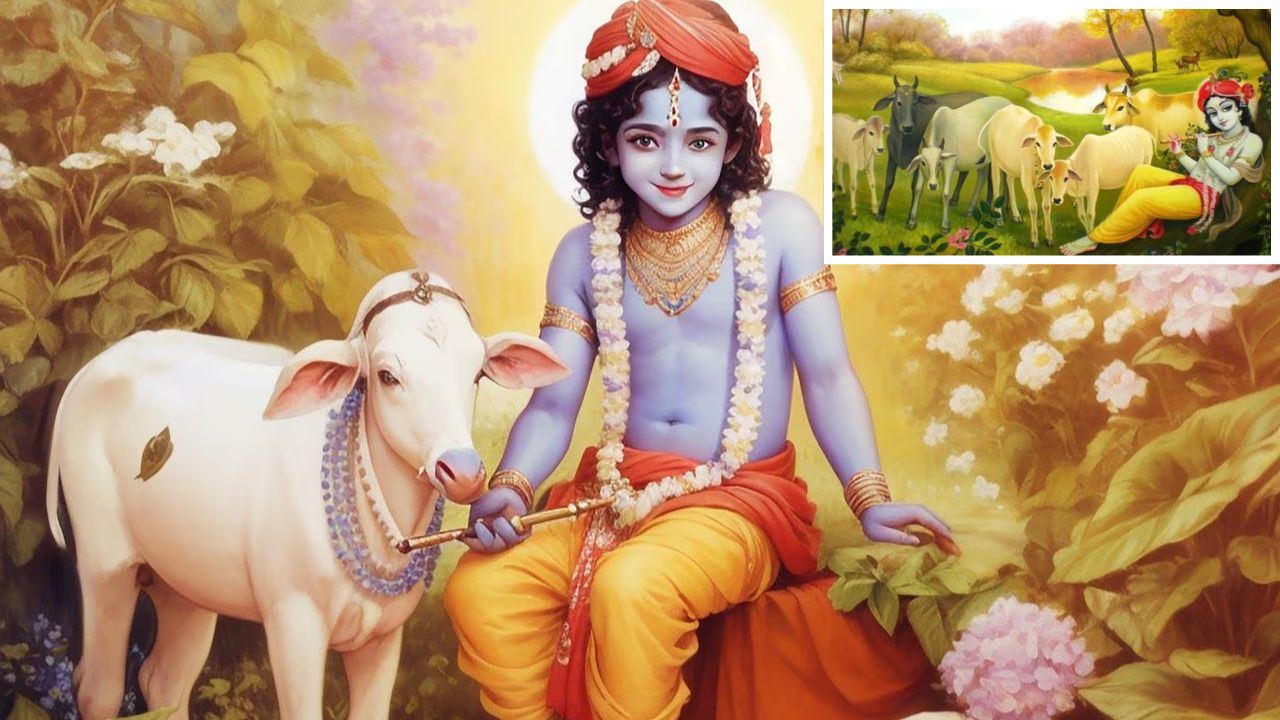Gopashtami 2025 sparks confusion is it on October 29 or 30? As devotees prepare to worship the sacred cow, discover why this ancient festival holds deep ties to Lord Krishna and what its rituals truly signify.

Festival honours the divine bond between Lord Krishna and the holy cow.
New Delhi: As the sacred month of Kartik reaches its midpoint, Hindu devotees across India prepare to celebrate Gopashtami, the festival that honours the divine bond between Lord Krishna and the sacred cow. However, this year, a question has left many devotees wondering- will Gopashtami 2025 fall on October 29 or October 30?
According to the Hindu Panchang, the Ashtami Tithi of Kartik Shukla Paksha begins at 9:23 am on October 29 and ends at 10:06 am on October 30, 2025. Since the Ashtami Tithi extends across two days, some regions will mark Gopashtami on October 29, while others following the sunrise-based (Udaya Tithi) rule will celebrate it on October 30.
Experts suggest that devotees should confirm the observance date according to their local Panchang or temple schedules, as regional customs may vary slightly.
Derived from the Sanskrit words ‘Go’ (cow) and ‘Ashtami’ (eighth day), Gopashtami signifies the eighth day dedicated to cows. The festival commemorates the moment when Lord Krishna, after reaching a certain age, was entrusted by his father Nanda Maharaj to tend and protect the cows of Vrindavan.
It is said that from this day onward, Krishna, accompanied by his elder brother Balarama and friends, began herding cows into the forest- an act symbolising duty, compassion, and devotion. Hence, Gopashtami celebrates both Krishna’s new responsibility and the spiritual importance of cows in Hindu life.
Scriptures describe the cow as the abode of 33 crore deities.
In Hindu tradition, the cow, or Gau Mata, is revered as a symbol of nourishment, selflessness, and motherhood. Scriptures describe the cow as the abode of 33 crore deities. Her gifts milk, dung, and urine are considered purifying and essential for daily life and rituals.
On Gopashtami, devotees honour cows as divine providers and express gratitude for their contribution to humanity. The festival also serves as a reminder of the ecological balance between humans, animals, and nature.
The day begins with devotees bathing early, wearing clean clothes, and visiting gaushalas (cow shelters) or temples. Cows and calves are bathed, decorated with tilak, turmeric, and garlands, and offered jaggery, fruits, and green fodder.
People perform Gau Puja by lighting lamps and singing devotional songs in praise of Lord Krishna, also known as Govinda and Gopala: protector of cows. In several places, especially in Mathura, Vrindavan, and Barsana, grand processions and temple ceremonies are organized to mark the occasion.
Many devotees also perform ‘Go Seva’ serving cows by feeding and cleaning them and donate to cow shelters as an act of piety and social service.
Chhath Puja 2025: What to do if your nirjala fast breaks by mistake?
The celebration is most vibrant in the Braj region of Uttar Pradesh, where Krishna’s cowherding pastimes are deeply woven into the local culture. Similar festivities are observed across Rajasthan, Gujarat, Bihar, and West Bengal, often coinciding with post-harvest gratitude rituals.
In urban areas, temples and community organizations organize symbolic Gau Puja events, drawing devotees from all walks of life.
Whether celebrated on October 29 or 30, Gopashtami 2025 carries the same spiritual essence a reminder to protect, respect, and serve all living beings. As devotees across India prepare for prayers and rituals, the message of the festival remains timeless: service to the cow is service to creation itself.
Beta feature